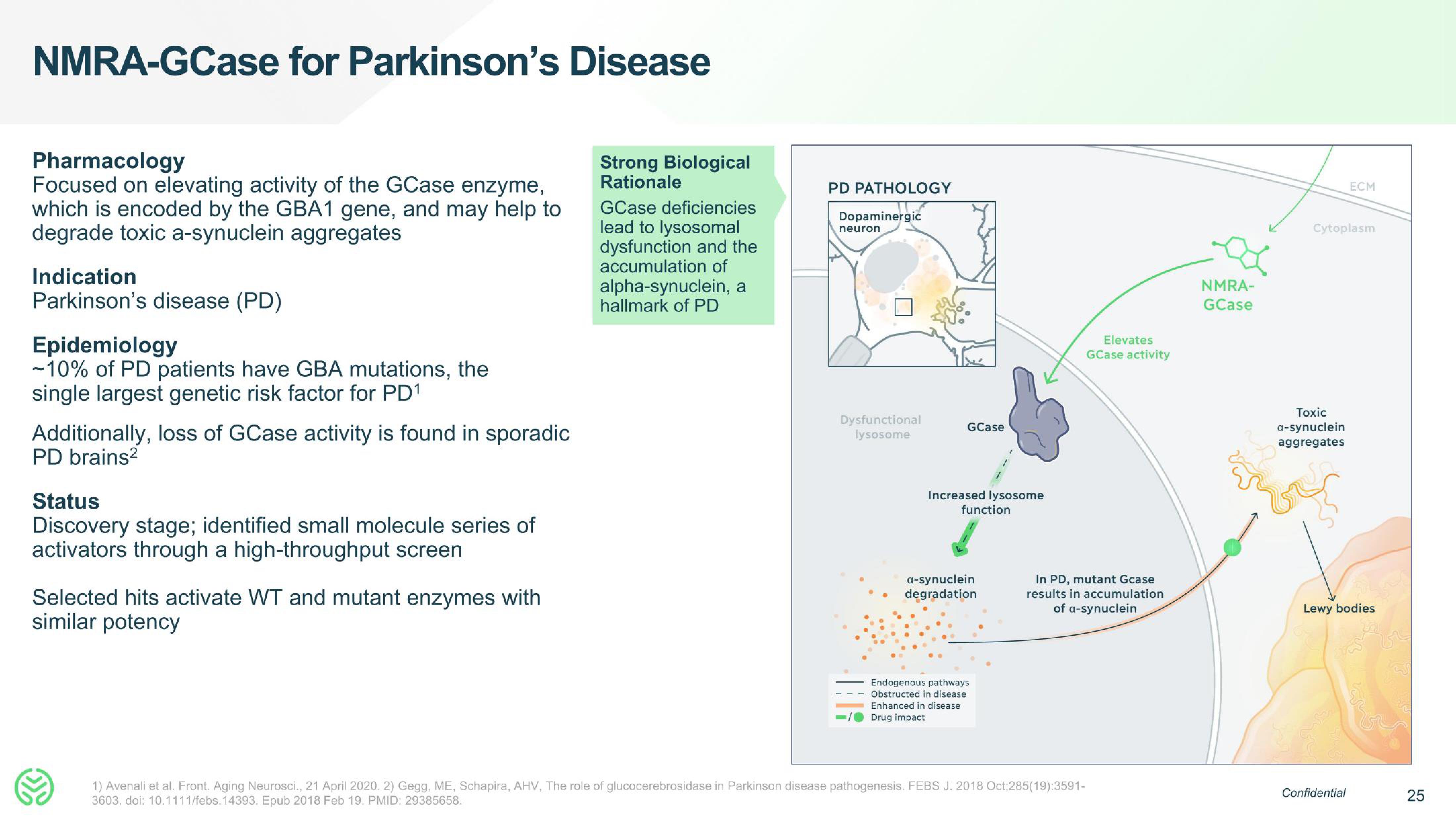Neumora Therapeutics IPO Presentation Deck
NMRA-GCase for Parkinson's Disease
Pharmacology
Focused on elevating activity of the GCase enzyme,
which is encoded by the GBA1 gene, and may help to
degrade toxic a-synuclein aggregates
Indication
Parkinson's disease (PD)
Epidemiology
~10% of PD patients have GBA mutations, the
single largest genetic risk factor for PD¹
Additionally, loss of GCase activity is found in sporadic
PD brains²
Status
Discovery stage; identified small molecule series of
activators through a high-throughput screen
Selected hits activate WT and mutant enzymes with
similar potency
Strong Biological
Rationale
GCase deficiencies
lead to lysosomal
dysfunction and the
accumulation of
alpha-synuclein, a
hallmark of PD
PD PATHOLOGY
Dopaminergic
neuron
Dysfunctional
lysosome
GCase
Increased lysosome
function
a-synuclein
degradation
Endogenous pathways
Obstructed in disease
Enhanced in disease
Drug impact
Elevates
GCase activity
In PD, mutant Gcase
results in accumulation
of a-synuclein
1) Avenali et al. Front. Aging Neurosci., 21 April 2020. 2) Gegg, ME, Schapira, AHV, The role of glucocerebrosidase in Parkinson disease pathogenesis. FEBS J. 2018 Oct;285(19):3591-
3603. doi: 10.1111/febs.14393. Epub 2018 Feb 19. PMID: 29385658.
NMRA-
GCase
Cytoplasm
Toxic
a-synuclein
aggregates
ECM
Lewy bodies
Confidential
25View entire presentation